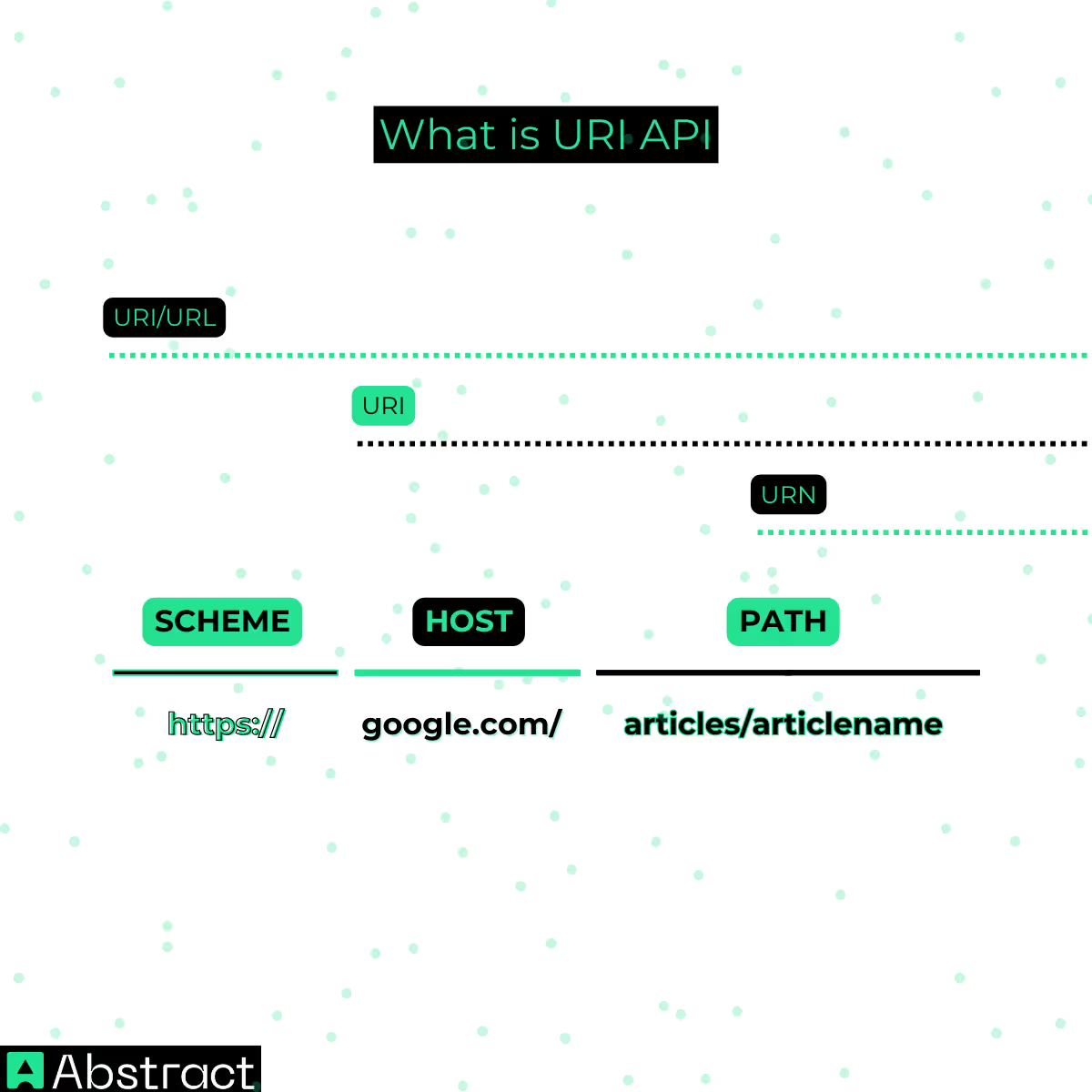Introduction to What is URI API
If you're new to APIs, you might have encountered the term "URI" and wondered, "What is a URI API?" You're not alone—URIs can be a confusing topic, especially when discussing how they relate to APIs.
However, understanding URIs is essential for working effectively with APIs, including those provided by AbstractAPI.
In this guide, we’ll break down what a URI is, how it differs from a URL, and why it's crucial in API development. We'll also provide concrete examples using AbstractAPI’s services to illustrate these concepts in action.
What is a URI?
A Uniform Resource Identifier (URI) is a string of characters used to identify a resource on the internet. A URI can be broken down into several components:
- Scheme: Specifies the protocol (e.g., https, ftp).
- Authority: Identifies the domain (abstractapi.com).
- Path: Specifies the resource location (/v1/).
- Query Parameters: Provide additional information (?email=test@example.com).
- Fragment: Points to a specific section within a resource (rarely used in APIs).
For example, in the URI:
- https is the scheme.
- emailvalidation.abstractapi.com is the authority.
- /v1/ is the path.
- ?email=test@example.com is the query parameter.

URI vs. URL: Clarifying the Difference
A URL (Uniform Resource Locator) is a specific type of URI that not only identifies a resource but also provides a means to locate it.
Simple Analogy of URI vs. URL
Think of a URI as a person’s name—it identifies them uniquely. A URL, on the other hand, is like their home address—it tells you where to find them.
Thus, all URLs are URIs, but not all URIs are URLs. An example of a URI that is not a URL could be a mailto: URI (mailto:someone@example.com), which does not specify a location but still identifies a resource.
What is URI API?
An API (Application Programming Interface) uses URIs to identify specific resources or functionalities. Every API request includes a URI that tells the server what data or action is required.
For example, when an application requests user data, the API call might look like this:
- The URI /users/123 specifies that the API should return information about user 123.
How APIs Use URIs
APIs use different HTTP methods with URIs to perform actions:
- GET /users/123 → Retrieve user details.
- POST /users → Create a new user.
- PUT /users/123 → Update user 123’s details.
- DELETE /users/123 → Remove user 123.
Common API URI patterns include:
- /users/{user_id} → Retrieve a specific user.
- /products?category=electronics → Filter products by category.
- /articles/{article_id}/comments → Access nested resources like comments under an article.
Emphasizing Resource Identification
Think of a URI as a home address for data. Without the correct URI, an API won’t know where to retrieve or send information, making it a fundamental part of API communication.
URI API Examples with AbstractAPI
To see how URIs work in real-world APIs, let’s examine some examples from AbstractAPI.
Example 1: Email Verification API
- https://emailvalidation.abstractapi.com → Base URI.
- /v1/ → API version.
- ?email=test@example.com → Query parameter for the email to validate.
Example 2: IP Geolocation API
- https://ipgeolocation.abstractapi.com → Base URI.
- /v1/ → API version.
- ?api_key=YOUR_API_KEY → Your unique API key.
- &ip_address=8.8.8.8 → IP address to geolocate.
Example 3: Phone Number Validation API
- Identifies and validates phone numbers similarly to email verification.
These examples showcase how AbstractAPI designs URIs for easy integration and readability.
Implementation Considerations
1. URI Design
- Keep URIs clear and consistent.
- Use meaningful paths (/users/123 instead of /u123).
- Avoid including sensitive data in the URI.
2. Security
- Do not expose API keys directly in query parameters (use headers when possible).
- Use HTTPS to encrypt requests.
3. Encoding
- Properly encode query parameters to prevent errors.
- Example: ?name=John%20Doe (encoding space as %20).
Conclusion
Understanding URIs is crucial for working with APIs. They act as addresses that APIs use to locate resources and process requests efficiently.
AbstractAPI designs APIs with clear, structured URIs, making them easy to use for developers. Whether you're verifying an email, geolocating an IP, or validating a phone number, AbstractAPI’s simple URI design ensures seamless API integration.
Ready to start building with APIs? Sign up for a free AbstractAPI account and explore our range of easy-to-use APIs. Get started today!



